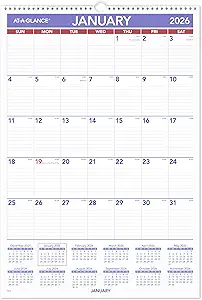How to Set Achievable Goals: A 6-Step Guide to Turning Dreams into Reality
Every year, millions of us make resolutions, set intentions, and dream of a better future. We want to get in shape, start a business, learn a language, or finally write that novel. Yet, how often do those grand ambitions fizzle out by February? The problem usually isn’t a lack of desire, but a lack of a workable system. A dream without a plan is just a wish.
For a long time, I was a professional dreamer. My goals were big, vague, and intimidating. “Get healthy” and “be more successful” were my annual refrains. Unsurprisingly, I made little progress. The shift happened when I stopped just dreaming and started designing. I learned that setting achievable goals is a skill, a methodical process that transforms abstract hopes into a concrete, actionable roadmap.
This is that roadmap. This is not about “thinking positive” and hoping for the best. This is a step-by-step guide to architecting your ambitions. We will walk through a 6-step framework that will teach you how to define what you truly want, build a bulletproof plan, and create the momentum you need to see your goals through to the finish line. Prepare to stop wishing and start doing.

Step 1: Start with Clarity – What Do You *Really* Want and Why?
Before you can create a map, you need a destination. The first and most crucial step is to get radically clear on what you want. Many people set goals they think they *should* want, based on societal pressure or external expectations. These goals lack the internal fire needed to get through the tough times.
The Brain-Dump and The ‘Why’ Exercise
Grab a notebook and for 15 minutes, write down everything you could possibly want to achieve in the next year. Don’t filter, judge, or worry about feasibility yet. Just write. After your list is complete, circle the top 3-5 goals that truly excite you. For each of those, ask yourself “Why?” five times to get to the core emotional driver.
Example:
- Goal: I want to lose 20 pounds.
- Why? To feel healthier.
- Why? To have more energy.
- Why? So I can keep up with my kids and be more present with them.
- Why? Because my family is the most important thing to me, and I want to be the best version of myself for them.
Now *that* is a powerful motivator. “Losing 20 pounds” is a task. “Being an energetic, present parent” is a purpose. This deep “why” is the fuel you’ll need when your initial motivation wanes.
Step 2: Make It Real – The SMART Goal Framework
Once you know your ‘what’ and ‘why’, you need to translate your draft goal into a clear, actionable statement. The most effective tool for this is the time-tested **SMART** framework. This acronym ensures your goal is not a fuzzy dream but a concrete target.
- Specific: Your goal must be clear and unambiguous. Who, what, where, when, why? Instead of “get in shape,” a specific goal is “join the downtown YMCA and attend their group fitness classes.”
- Measurable: How will you track your progress and know when you’ve succeeded? “Save more money” isn’t measurable. “Save $5,000” is. You need concrete numbers to aim for.
- Achievable: Your goal should stretch you, but not be impossible. Aiming to lose 50 pounds in a month is not achievable and will lead to burnout. Aiming to lose 1-2 pounds a week is.
- Relevant: Does this goal align with your deeper “why” and your long-term life vision? If you’re setting a goal to get a promotion in a career you hate, it’s not relevant to your happiness.
- Time-bound: Your goal needs a deadline. A deadline creates a sense of urgency and prevents procrastination. “Someday” is not a day of the week.
Putting It All Together: A SMART Goal Example
Vague Dream: “I want to save more money.”
SMART Goal: “I will save $5,000 for a down payment on a house (Specific, Relevant) by depositing $417 into my high-yield savings account on the first of every month (Measurable, Achievable) for the next 12 months, starting October 1st, 2025 (Time-bound).”
Step 3: Break It Down – Create Your Actionable Roadmap
A goal to save $5,000 in a year can still feel daunting. The key to making it feel achievable is to deconstruct it into smaller, manageable pieces. You need to build a roadmap from where you are to where you want to be.
From Yearly Goals to Weekly Actions
- Yearly Goal: Save $5,000.
- Quarterly Milestone: Save $1,250 every 3 months.
- Monthly Target: Save $417 per month.
- Weekly Action: Find ways to reduce spending by ~$100 per week.
Now the goal isn’t some huge, abstract number. It’s a concrete weekly task. This is where your goal setting intersects with practical, daily systems. Your task now is to figure out the “how.” For instance, you might decide a key action is to create a system for **how to save money on groceries**, which could easily account for a significant portion of that weekly savings target. Suddenly, the big goal feels much more achievable.
Step 4: Schedule Your Success
An achievable goal requires a plan, and a plan requires time. Once you’ve broken your goal into small steps, the next crucial move is to schedule those actions directly into your calendar. Don’t just put them on a to-do list; give them a specific day and time. This is where goal setting and time management become inseparable. To truly master this, you need a system for **how to manage time effectively**, ensuring your daily actions align with your long-term ambitions.
If your goal is to write a book, block out “Writing Time” on your calendar three times a week. If your goal is to learn to code, schedule your online courses and practice sessions. Treating your goal actions with the same respect as a doctor’s appointment makes you infinitely more likely to follow through.
Step 5: Track Your Progress and Celebrate Small Wins
Momentum is the secret ingredient to long-term success. The best way to build momentum is to visually track your progress. Use a habit tracker app, a spreadsheet, or a simple chart on your wall. Seeing your progress—even small steps—is incredibly motivating.
Equally important is celebrating your milestones. When you hit your first monthly savings target or finish the first chapter of your book, acknowledge it! Reward yourself with something small that doesn’t sabotage your goal. This positive reinforcement trains your brain to associate the hard work with a positive outcome, making you eager to continue.
Step 6: Plan for Setbacks and Stay Flexible
Life happens. You’ll get sick, have a busy week at work, or simply lose motivation. This is not failure; it’s part of the process. The key is to have a plan for when you get off track.
Adopt the “Never Miss Twice” rule. It’s okay to miss one workout. It’s not okay to miss two in a row. The first miss is an anomaly; the second one is the start of a new, negative habit. If you fall off, don’t spiral into guilt. Simply acknowledge it and get right back on track with your next scheduled action. Your long-term consistency is far more important than short-term perfection.
As an Amazon Associate, we earn from qualifying purchases. These tools have been selected because they are exceptionally effective for the process of planning, executing, and tracking your goals.
Essential Tools for Your Goal-Setting Journey
Having the right tools can make a significant difference in your ability to stay organized and motivated.

Leuchtturm1917 A5 Dotted Hardcover Notebook
The perfect blank canvas for your goals. A high-quality journal is essential for the initial brain dump, breaking down your goals, and tracking your progress. The act of writing by hand solidifies your intentions in a way digital tools can’t.
Check Price on Amazon
Your Best Year Ever by Michael Hyatt
For those who want an even deeper dive into goal achievement, this book provides a proven, research-based system for setting and achieving what matters most. It’s a powerful guide for getting past your roadblocks and designing your life with intention.
Check Price on Amazon
Large Wall Calendar & Planner
Keep your goals front and center with a visual planner. A large wall calendar is perfect for tracking milestones, deadlines, and building motivational streaks. Seeing your progress every day is a powerful psychological boost to keep going.
Check Price on AmazonFrequently Asked Questions About Goal Setting
What’s the difference between a goal and a system?
A goal is the result you want to achieve (e.g., run a marathon). A system is the process you follow that leads to that result (e.g., run 3 times a week, following a specific training plan). Successful people focus on building consistent systems, knowing that the goals will naturally follow.
How many goals should I set at once?
Less is more. It’s better to make significant progress on 1-3 major goals than to make minimal progress on ten. If you have many things you want to achieve, prioritize them and consider tackling them sequentially throughout the year.
What should I do if I lose motivation?
Motivation is fleeting; systems are reliable. When motivation is low, fall back on your schedule and your “why.” Re-read the purpose behind your goal. Then, commit to taking just one small action. Action often precedes motivation, not the other way around.
Should I share my goals with others?
This depends on your personality. Sharing your goal with a trusted friend or mentor can create a powerful sense of accountability. However, some studies suggest that sharing a goal publicly can sometimes give you a premature sense of accomplishment. A good compromise is to share your goal with a small, supportive “accountability group.”
Conclusion: You Are the Architect of Your Life
Setting achievable goals is the art of turning the invisible into the visible. It’s the most powerful skill you can learn for creating a life of purpose and accomplishment. It’s not a magical process, but a methodical one that anyone can master.
You now have the complete 6-step framework. The only thing left is to take the first step. Don’t wait for the new year or for Monday. Grab a notebook right now and start Step 1. Define what you want, build your plan, and start building the future you deserve, one small, intentional step at a time.

